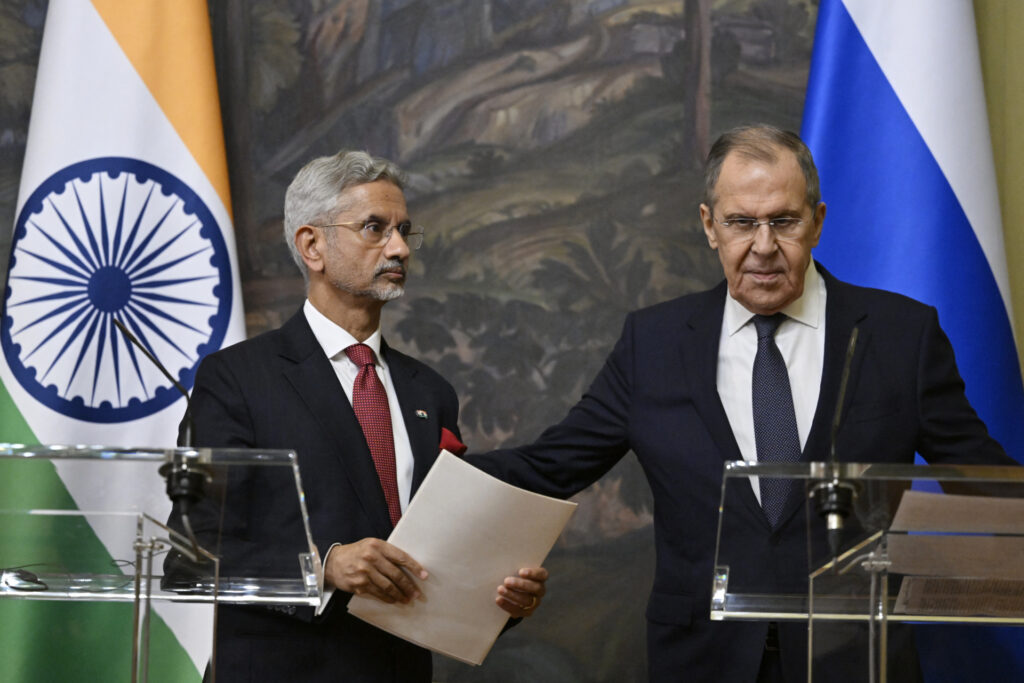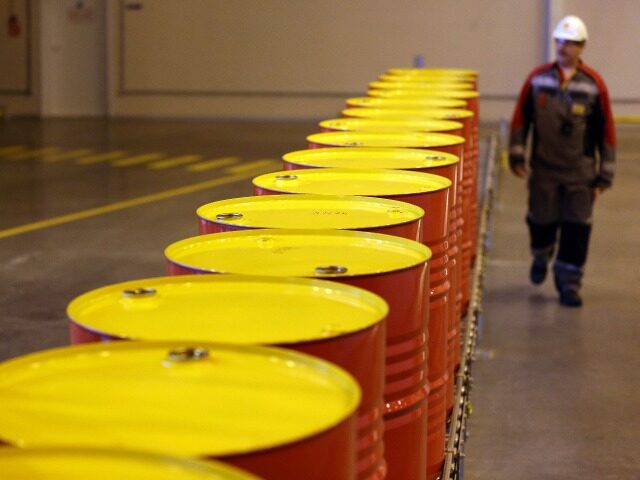Russia’s Deputy Prime Minister Alexander Novak said on Wednesday that Russia has largely completed the process of shifting its oil exports from Europe to China and India, ostensibly eliminating the pressure of European sanctions on Russian oil after the invasion of Ukraine.
“We previously supplied a total of 40 to 45 percent of oil and oil products to Europe. This year, we expect the figure not to exceed four to five percent of total exports,” Novak said.
“China – whose share has grown to 45-50 percent – and India have become our main partners in the current situation,” he continued. “In two years, the total share of supplies to India has increased to about 40 percent.”
Novak rubbed in the failure of Western sanctions by adding that a massive $21 billion liquefied natural gas (LNG) project in the Arctic is proceeding more or less on schedule despite U.S. sanctions. He said the plant is already partially operational and will eventually produce 19.8 million tons of LNG per year. The European Union (EU) will be one of the customers for that gas, as its Ukraine war sanctions do not extend to LNG products.
“There are a lot of people who want to buy Russian oil. These are Latin American countries, African countries, and other countries of the Asia-Pacific region,” the deputy prime minister said.
Novak predicted total Russian energy revenues for 2023 would end up roughly the same as they were before the Ukraine invasion prompted heavy Western sanctions.
Most of Novak’s comments came as no surprise to oil market observers. China and India have been blunt about their appetite for discounted Russian oil.
In May, India’s purchases of Russian oil hit an all-time high of 1.95 million barrels per day, which accounted for almost 40 percent of its total oil imports. At the beginning of the Ukraine invasion, India got about two percent of its oil from Russia.
India makes a fortune buying cheap Russian crude and using its vast refinery capacity to process it. Some of those refined products are sold to customers in the U.S. and Europe, neatly sidestepping sanctions on Russia.
Indian officials can become quite testy when challenged on buying oil from Russia, pouring money into Moscow’s coffers, and funding the Russian war machine. In December 2022, Foreign Minister S Jaishankar curtly told the Europeans that India would not starve itself of energy to damage Russia while the Europeans secured their own supplies.
In May, Jaishankar rebuked the EU for buying third-party oil products made with Russian crude while simultaneously criticizing India for doing business directly with Moscow. The EU conceded it was “normal” for India to buy from Russia.
On Thursday, Jaishankar visited Moscow to reaffirm India’s diplomatic and economic partnership. He approvingly noted trade between the two countries has grown to more than $50 billion.

Russia’s Foreign Minister Sergei Lavrov (R) and India’s Foreign Minister Subrahmanyam Jaishankar (L) leave after a joint press conference following their talks in Moscow on December 27, 2023. (ALEXANDER NEMENOV/POOL/AFP via Getty Images)
“We believe that this is something whose potential is now only beginning to be visible,” he said after meeting with Russian leader Vladimir Putin. Putin said the enormous growth in trade between India and Russia was driven by oil and high-technology products.
Almost the only concession India has made to Russia’s nominal pariah status is canceling an annual summit meeting that was held for two decades until Russia invaded Ukraine, which evidently made India feel it had to quietly cancel the Russia summit to maintain its good relations with the United States.
China’s ravenous appetite for fossil fuels showed little sign of curbing in 2023. The Chinese imported a record volume of crude oil in 2023, with much of the increase coming from Russia. China’s imports from Russia rose by 23 percent in 2023, bested only by its 49 percent increase in purchases from Brazil.
Industry analysts told Reuters on Wednesday that Russia has “largely overcome Western sanctions” and is expected to hold steady or even export slightly more oil in 2024. The most important factor keeping exports down is that America, Venezuela, and Iran have stepped up their oil output, prompting Russia and the other members of the OPEC+ group to restrain production so prices remain stable.
Reuters noted that the International Energy Agency (IEA) predicted in 2022 that three million barrels per day of Russian oil would be pushed out of the market by sanctions, but this did not come to pass because Russia was able to divert almost all of its exports to China and India.

COMMENTS
Please let us know if you're having issues with commenting.